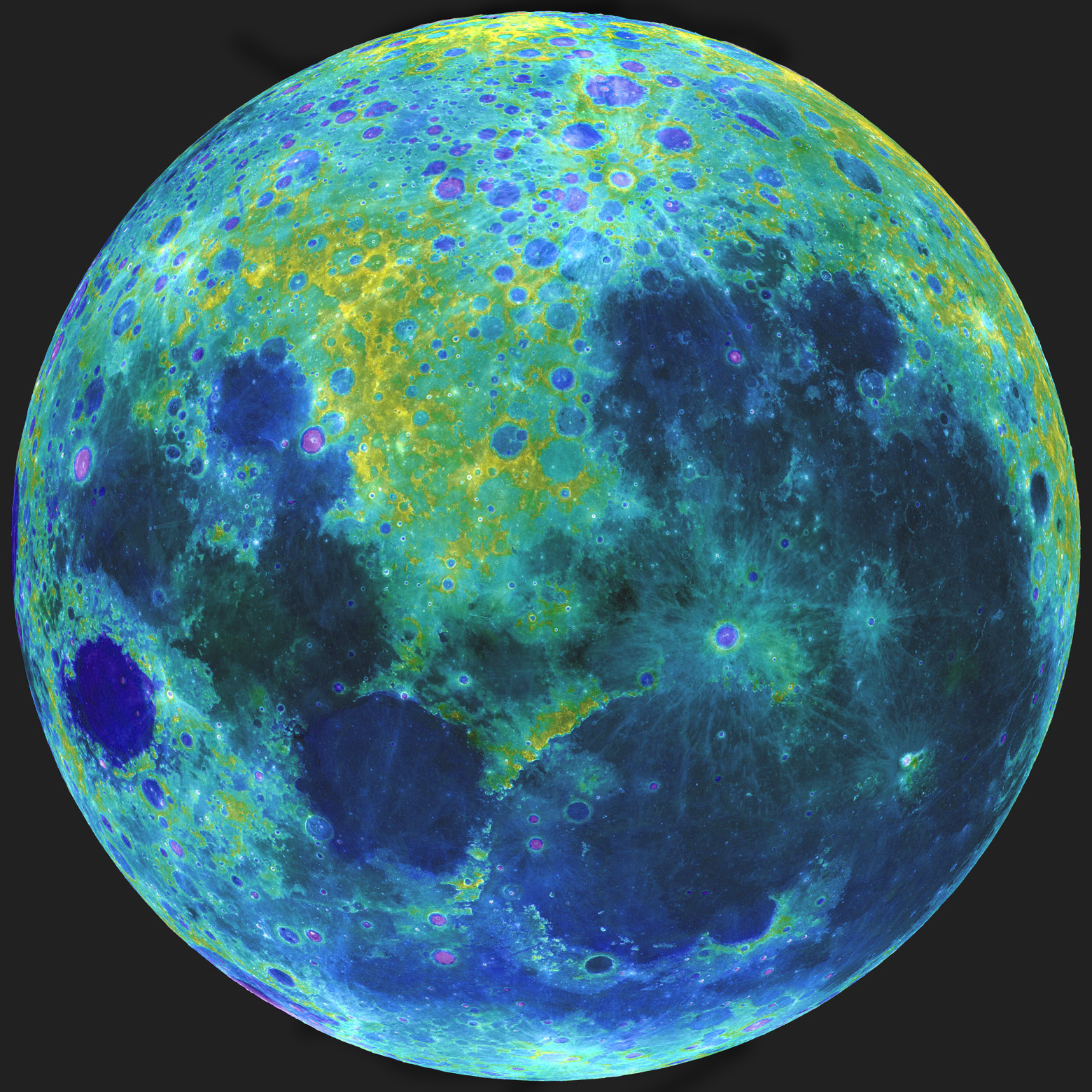May 18, 2014
Deep Floors

image by Maurice Collins, New Zealand
Maurice is a master at mashing together different types of lunar data sets. He has just now combined the new high Sun LRO mosaic with the earlier LRO topo map to produce this stunning new image map. I have enhanced his original version (which used the LRO colors for topo) to make purples and dark blues more visible. Because these are the colors for the greatest depths below the average lunar elevation this produces a map that pinpoints lunar deep spots. So immediately it can be seen that the purple floors of Theophilus, Langrenus and Aristoteles are quite deep, about 4,750 m below the lunar average elevation, or -4,750 m. The maria are blues, with a range of elevations, but Imbrium, Serenitatis and Procellarum are around -2,400 to -2,600 m. Crisium and Smythii are about a kilometer deeper (-3,600 to -3,800 m), and Humboldtianum is the deepest nearside basin at about -4400 m. Craters that excavated into deep basin floors go even further down, for example, Picard's floor is at about -5,300 m. To put these depths into perspective, the crater Bose, on the floor of the Apollo Basin that cuts into the farside South-Pole-Aitken Basin, has a floor elevation of about -7,400 m. Because of extreme enhancement of topography colors, Maurice's image map thus shows low spots more clearly than the original LRO altimetry map does. I don't know what the lowest spot on the lunar nearside is, but you can determine likely candidates on this LPOD and then check out the topography with the LRO QuickMap Path tool. I just did that and discovered the lowest floor (not just one or two pixels) that I know of on the nearside: the floor of Hercules G at -6,570 m. Is there anyplace deeper on the nearside?
Chuck Wood
Yesterday's LPOD: Color Mapping
Tomorrow's LPOD: Smoky Moon
COMMENTS?
Register, Log in, and join in the comments.



